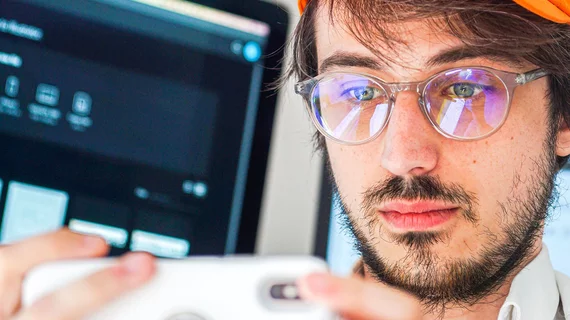Prof. Hilbert: ‘The merger between biological and AI has already crossed beyond any point of return’
Whatever name it takes when it goes down in history, the present “information age” will be inextricably linked to AI. It’s been so since around 2008, although popular perception needed time to catch up with the depth of the development.
What’s more, this time of information transformation might be categorized as the third monumental “metaparadigm” in the socioeconomic evolution of humankind. The preceding two meta-epochs saw humans transforming material (stone, bronze and iron, in that order) and then energy (water, steam, electricity and combustion).
The longitudinal historical perspective on our digital days gets an illuminating airing-out in an article running online in Dialogues in Clinical Neuroscience.
Its author is Martin Hilbert, PhD, a UC-Davis professor who chairs the school’s designated emphasis program in computational social science.
Commenting on what name historians might settle on to label our interesting times, Hilbert notes that this “most recent period of ancient and incessant logic of societal transformation” took a series of titles between the 1970s and the year 2000.
In chronological order, he recounts, these have included post-industrial society, information economy, information society, fifth Kondratieff, information technology revolution, digital age and information age.
“While only time will provide the required empirical evidence to set any categorization of this current period on a solid footing, recent developments have suggested that we are living through different long waves within the continuously evolving information age,” writes Hilbert, who holds separate doctorates in communication and economics/social sciences.
Considering the outlook for AI, he sees some already achieved advancements—cancer diagnostics, speech recognition—as “dazzling.”
And in case it’s been stealthy enough in its march forward to escape the attention it ought to be getting, note well that AI has “become an indispensable pillar of the most crucial building blocks of society.”
By now, Hilbert reminds, most people unknowingly trust AI with their very lives via, for example, antilock brake systems in cars and autopilots in planes.
Less obvious but no less pervasive are AI’s entanglements with the electric grid, stock transactions and even online matchmaking.
“If we were to study any other species that has outsourced almost all of its energy distribution decisions, three-quarters of its resource distribution decisions and an average one-third of its procreation decision to some kind of intelligent and proactive system, it is unlikely that we would treat them as two distinct and independent systems,” Hilbert writes. “We would look at it as one inseparable and organically interwoven socio-technological system.”
“From a historical perspective of social change,” he adds, “the merger between biological and AI has already crossed beyond any point of return, at least from the social science perspective of society as a whole.”
To read the rest, click here.

